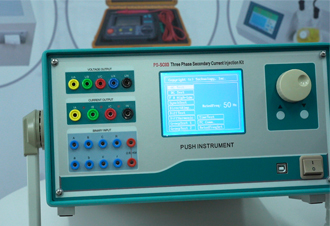 English
English


Understanding Insulation Resistance Testing in Transformers for Enhanced Performance and Safety
Insulation Resistance Test in Transformers
Transformers are crucial components in electrical power systems, serving to step up or step down voltage levels for efficient power distribution. One essential aspect of maintaining transformers is ensuring the integrity of their insulation systems. The insulation resistance test is a vital procedure used to evaluate the condition of the insulation, ensuring the safe and reliable operation of transformers.
The primary function of insulation in transformers is to prevent electrical leakage that can lead to short circuits and system failures. Over time, various factors such as moisture, temperature fluctuations, and contamination can degrade the insulating materials, compromising their effectiveness. Therefore, conducting insulation resistance tests is crucial in both preventive maintenance and troubleshooting processes.
The insulation resistance test typically involves applying a DC voltage—usually in the range of 250V to 5000V depending on the transformer rating—to the windings while measuring the resistance. This test is conducted when the transformer is de-energized, ensuring no electric current flows through the system during the evaluation phase. A higher resistance value indicates good insulation condition, while lower values may signify potential problems.
The IEEE (Institute of Electrical and Electronics Engineers) and other international standards recommend a minimum insulation resistance of 1 megohm per kV of operating voltage for transformers. For instance, a transformer operating at 10 kV should ideally exhibit an insulation resistance of at least 10 megohms. Values below this threshold can trigger further investigation, as they may suggest moisture ingress, contamination, or degradation of the insulating material.
insulation resistance test in transformer

Temperature also plays a significant role in insulation resistance readings. Typically, the resistance decreases with an increase in temperature. Therefore, it’s essential to consider environmental conditions when interpreting test results. For accurate assessments, insulation resistance tests should ideally be performed under consistent temperature conditions.
In addition to routine testing, insulation resistance tests can be employed to assess transformers after periods of inactivity or following maintenance activities. This practice helps identify any insulation deterioration that may have occurred during downtime.
Regular insulation resistance testing is a proactive measure, helping operators anticipate potential failures and maintain system reliability. By ensuring the health of transformer insulation, utilities can minimize the risk of outages, thereby enhancing overall operational safety and efficiency.
In conclusion, the insulation resistance test is a vital procedure in transformer maintenance that assesses the health of insulation systems. By conducting these tests regularly, electrical utilities can safeguard their transformers, prevent costly breakdowns, and ensure a reliable power supply to consumers.
-
Differences between open cup flash point tester and closed cup flash point testerNewsOct.31,2024
-
The Reliable Load Tap ChangerNewsOct.23,2024
-
The Essential Guide to Hipot TestersNewsOct.23,2024
-
The Digital Insulation TesterNewsOct.23,2024
-
The Best Earth Loop Impedance Tester for SaleNewsOct.23,2024
-
Tan Delta Tester--The Essential Tool for Electrical Insulation TestingNewsOct.23,2024





